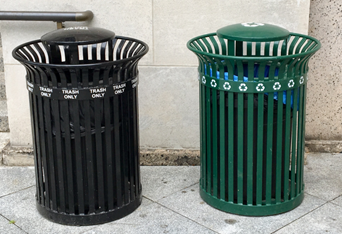Knowing where to put materials once you’re done with them can be confusing. Follow these guidelines to ensure that trash, recycling and compost bins are used correctly.
Signage
Using appropriate signage is a crucial way of communicating how to properly dispose of materials. Bins should be clearly labeled, additional signage posted nearby can provide more descriptive information about what (and what NOT) to place in each bin.
When organizing events, consider posting additional signage for materials that are specific to that particular event (e.g. “recycle all glass bottles here”). If you are offering reusable options, be sure to direct visitors accordingly so that materials are returned to a central location rather than discarded.
Placement
When serving food, request composting receptacles by requesting a Routine Facilities Service Request at least a week in advance.
Bin Type
The following bins are standard for public spaces or common areas in the interior of Yale owned and occupied buildings. Black is used to designate waste and green for single-stream recycling:
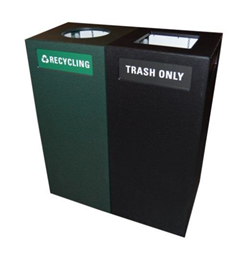
In spaces where the above bins may not fit, the below bins should be considered, and should feature approved labels:
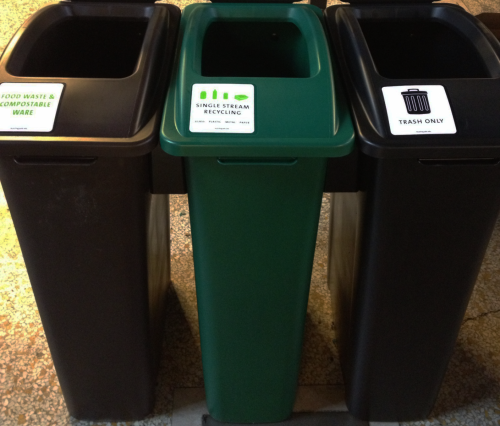
Standard deskside bins provide a larger container (for recycling paper) that has recycling information stamped onto it, with a smaller container inside it for non-food trash. All other materials generated should be placed in common area bins.
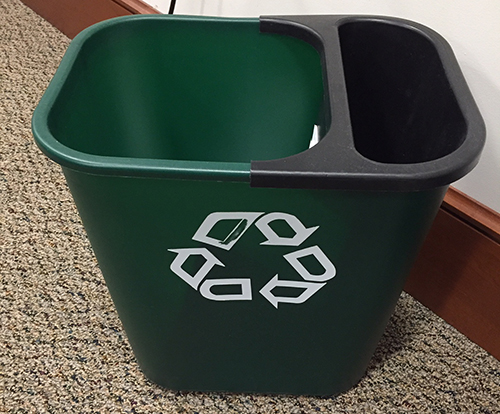
The table below outlines which materials should and should not be disposed of in the mixed paper bins:
| Acceptable | Not Acceptable |
|---|---|
| White paper | Paper clips |
| Colored paper | Hanging files |
| Glossy Paper | Food Service paper |
| Newspaper | Paper cups |
| Thin cardboard | Copy paper wrappers |
| Paper bags | |
| Envelopes with windows | |
| Manila folders | |
|
Sticky notes |
|
| Books | |
| Shredded paper | |
| Staples okay |
Blue bins are typically used for lab recycling.
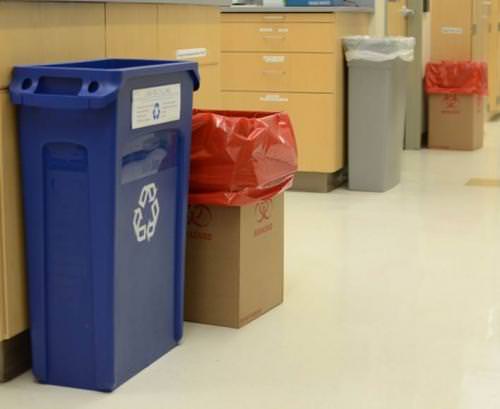
If your building needs bins, labels or signage, work with your Facilities Superintendent to obtain them. If your building is a leased space, contact University Properties at (203) 432-8300.
Standard exterior bins should be clearly labeled and located outside of Yale buildings.
